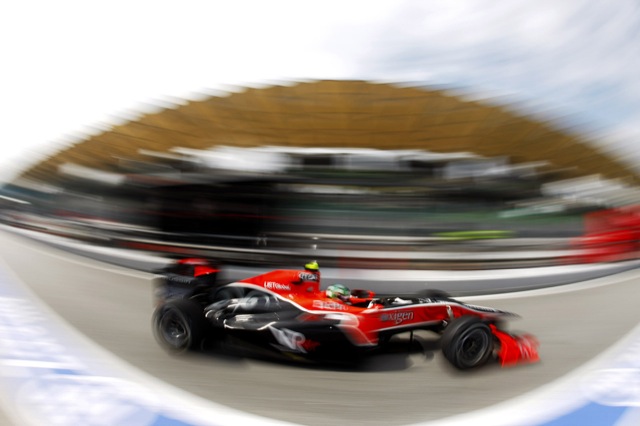
Brawn GP were hastily formed on the back of Honda withdrawing from Formula One after the 2008 season. Left high and dry, many people and companies were interested in taking on the team and Honda said they had received many offers and were sorting through them all. However, no offer impressed the Honda board and it was left up to the team’s new principal Ross Brawn to lead a management buyout with Nick Fry to ensure the squad and its employees survived. With help from Honda and cooperation from FOTA and Mercedes-Benz, Brawn GP was born.
For their initial season in 2009, the team had done almost no testing. The car had spent a couple of days at Silverstone being shaken down by both Jenson Button and Rubens Barrichello, and the squad also spent a week in Barcelona. The times set at the test sessions surprised all as the car was instantly quick and topped the tables. Speculation was rife that Brawn were running overly light in order to attract sponsors to help pay for the year’s racing, but alas the speculation was proven wrong at the team’s debut in Australia when the pace of the BGP-001 was proven and Brawn announced Richard Branson’s Virgin company as sponsors.
Winning their first race as Brawn, Jenson Button stood proudly on the podium to the cheers below. Very rarely is a team so successful in their maiden season, so rarely is a car so quick straight out of the box. It was soon noted though that the car was utilising an less-than-conventional diffuser, which sparked debate around the paddock. Ferrari, Renault and BMW lodged complaints which were dismissed by the stewards.
The three complaining teams appealed and the matter was sent to the WMSC to decide. The meeting not being able to happen until after the third round of the championship meant that Brawn raced a further two races, winning another in the process, before having their fate decided for them.
The ‘double diffuser’ was deemed legal as it did fall within the rules; Brawn had capitalised on a loophole they discovered. Brawn’s rivals were forced to modify their cars to incorporate a similar part as the season continued.
Jenson Button successfully scored six wins from the opening seven races and developed a sizable in the driver’s championship. Only Red Bull Racing appeared to have a car quick enough to prevent Brawn from taking the constructor’s title, and they were still getting used to the redesigned car following the ‘double diffuser’ upheaval.
In the middle part of the season, Button seemed to lose his momentum and both Sebastian Vettel and Mark Webber capitalised on this, winning races and beginning to haul in Ross Brawn’s team. Rubens Barrichello soon found some encouraging pace though and the Brazilian won two races and put together a string of points finishes to finish off his year. Jenson Button failed to win again but his points margin from early on was unassailable. The Briton became world champion with a race to spare and Brawn became the constructor’s champions of 2009.
The story of Brawn has gone down as one of the sport’s most enthralling tales, coming from nowhere in 2008 to world champions less than twelve months later. However, not wanting to be the owner as well as the commander, Ross Brawn decided to sell the team to engine supplier Mercedes-Benz in November, shortly after the season had closed.
The team have been renamed to reflect their new owners, but Ross Brawn and Nick Fry have remained in their positions, still owning a minority stake in the squad. Both Jenson Button and Rubens Barrichello left the team, Button going to partner Lewis Hamilton at McLaren and Barrichello to Williams alongside Nico Hulkenberg. In replacement, Mercedes announced Nico Rosberg as one driver over the winter and then in the early new year, they announced the return of Michael Schumacher, this time in a Mercedes Formula One car.
In one year, Brawn arrived, won, collected, triumphed and then left, albeit still leaving some traces in the guise of Mercedes.


















Add comment